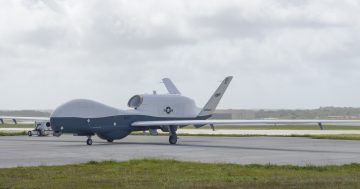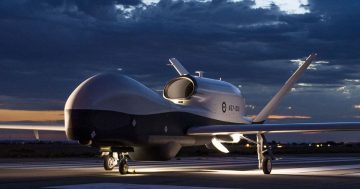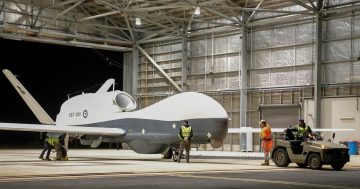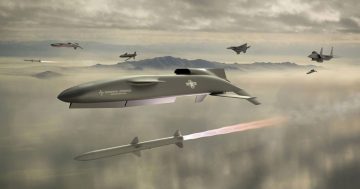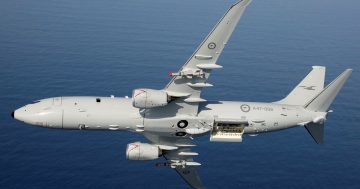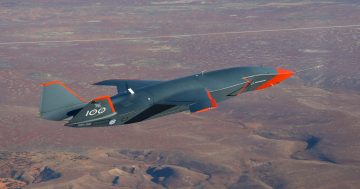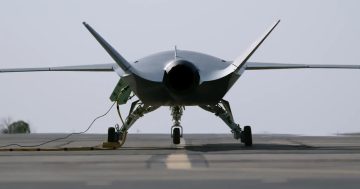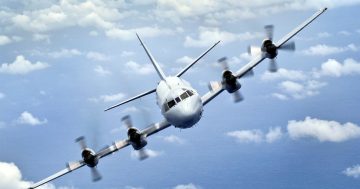
The RAAF’s first MQ-4C Triton was rolled out in September 2022, and was due to have flown by now. Photo: Northrop Grumman.
They say the side which has the most accurate and up-to-date information will win the next war.
Obviously, that side will also need people and capabilities to be able to do something with that information, kinetic or otherwise. But information will be key.
The Royal Australian Air Force (RAAF) will soon introduce two new airborne Intelligence, Surveillance and Reconnaissance (ISR) capabilities to vastly improve the information it and the wider Australian Defence Force (ADF) will be able to collect, particularly in the maritime and electronic domains.
It already has the Boeing E-7A Wedgetail airborne early warning & control (AEW&C), Boeing EA-18G Growler electronic attack, and the P-8A Poseidon maritime patrol aircraft in service, all considered world’s-best capabilities which can share data with multiple other aircraft and systems.
The two newcomers due to arrive in 2024-25 are the Gulfstream/L3Harris MC-55A Peregrine electronic support aircraft being acquired under Project AIR 555 Phase 1, and the high-flying Project AIR 7000 Phase 1B Northrop Grumman MQ-4C Triton uncrewed maritime ISR system.
Both projects were barely mentioned in the Defence Strategic Review (DSR) released in April. But behind the scenes, work is continuing to bring them into service, albeit, in the Triton’s case, at a snail’s pace!
Australia has had a requirement for a high altitude long-endurance (HALE) uncrewed maritime ISR capability since the mid-1990s. With the introduction of the Northrop Grumman RQ-4A/B Global Hawk uncrewed system into US service, a platform with the necessary range, altitude and endurance emerged.
When the US Navy started its Broad Area Maritime Surveillance (BAMS) program in 2005, the MQ-4C Triton development of the Global Hawk was born. The Triton is a big aircraft, with a 40 metre long glider-like wingspan allowing it to fly at altitudes of 55,000 feet or higher, giving it a huge visual and electronic field of view.
Its carries an advanced 360-degree Multifunction Active Sensor (MFAS) radar, a Multi-Spectral Targeting System (MTS-B) electro-optical sensor, and the Multi-INT suite of Electronic Intelligence (ELINT) sensors which can detect radar, communications, and other electronic emissions. All of the data collected by a Triton can be transmitted via satellite in near real time.
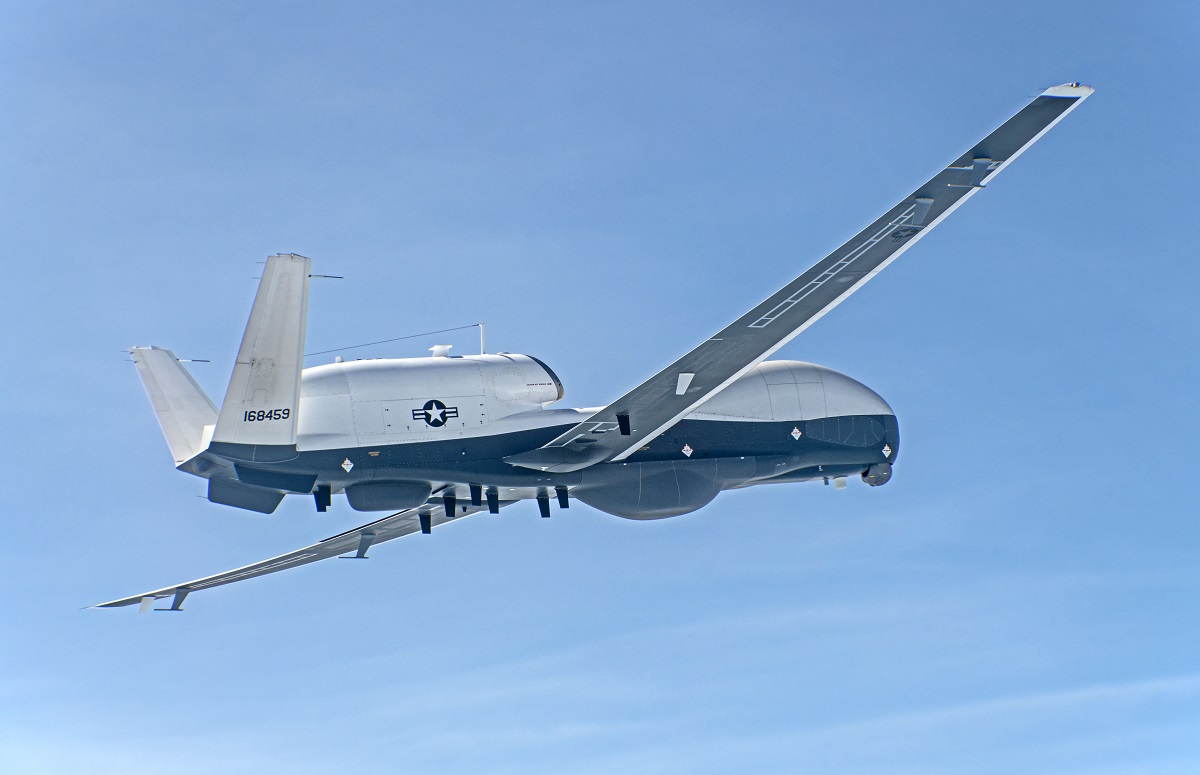
The US Navy plans to operate Tritons from Guam, California, Florida, Italy, and the Persian Gulf region. Photo: Northrop Grumman.
Australia quickly showed interest in Triton, but didn’t act until 2014 when a political announcement that it would buy the system was made. The 2016 Defence White Paper ratified a requirement for up to seven Tritons, and in 2018, the RAAF signed on as a cooperative development partner with the US Navy on the program to the tune of $200 million.
While the US and Australian development production programs have been slow to ramp up, in 2020 the US Navy deployed two early-build aircraft to Guam in the western Pacific to work closely with US Navy ships operating in the region. From Guam, the Triton’s long range and more than 26 hours’ endurance allows it to cover a massive area between Hawaii, Alaska, Japan, the South China Sea, and Australia.
The RAAF’s Tritons will be home-based at RAAF Base Edinburgh where the majority of pilots, sensor operators, training facilities, and the newly resurrected No 9 Squadron administration will be located. But most of the aircraft will be forward deployed to RAAF Base Tindal in the Northern Territory.
The US Navy is planning to base its Tritons at five locations – Guam, California, Florida, the Mediterranean, and the Persian Gulf region. Australia’s Tindal-based Tritons will act as a ‘sixth orbit’, with RAAF aircraft working hand in hand with the US Navy to cover the eastern end of the Indian Ocean, the Southern Ocean, and Australia’s northern and eastern maritime approaches well up into the South China Sea.
The RAAF’s original schedule would have seen its first and second Tritons delivered in 2021, an initial operating capability of three aircraft declared in mid-2022, and its seventh delivered in 2024. But due to development and budgetary delays on both sides of the Pacific, that has slipped by three years.
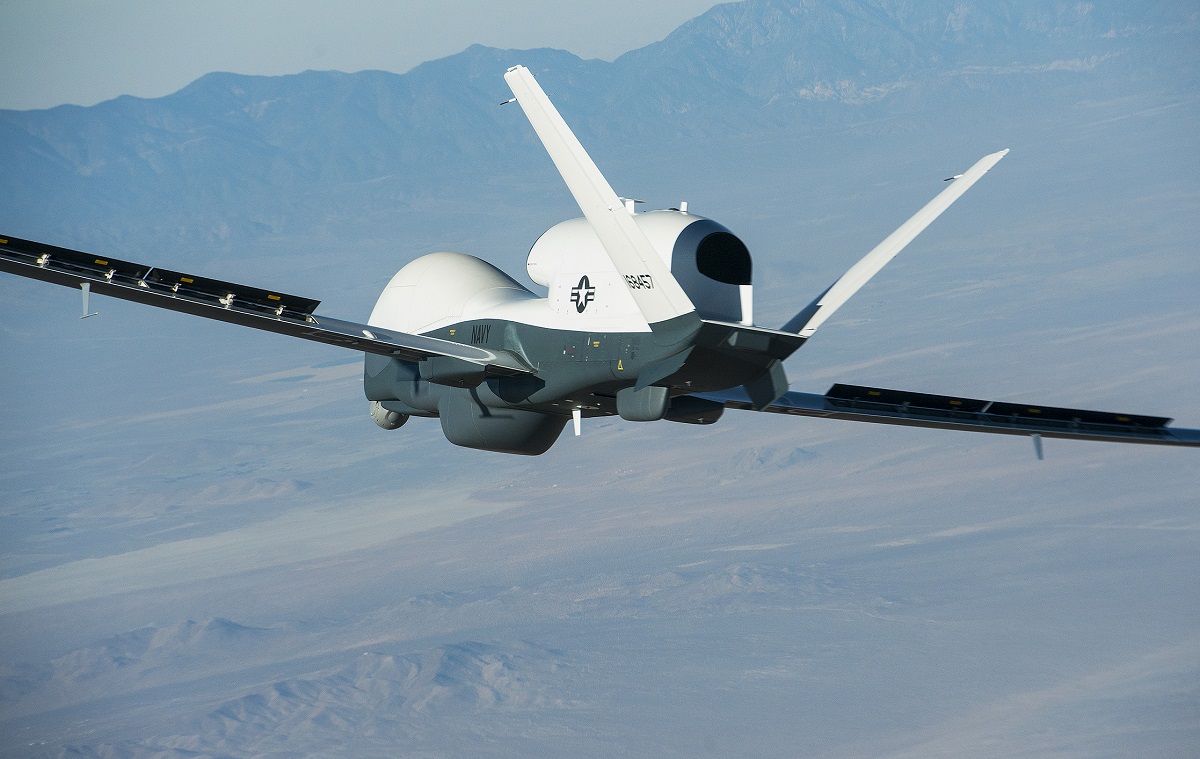
The Triton program has been affected by developmental and budgetary delays on both sides of the Pacific. Photo: Northrop Grumman.
The first RAAF Triton was rolled out of Northrop Grumman’s Palmdale California facility in September 2022 and, at last report had been scheduled to undertake its first flight by mid-2023. Australia has ordered just three Tritons to date – the last order being placed in June 2020.
The ongoing uncertainty in the RAAF’s commitment to the program and an almost glacial service introduction schedule hasn’t been helped by a further 12-month program delay inserted into the October 2022 budget. While the Coalition’s May 2022 budget had forecast 300 flying hours for RAAF Tritons in 2023-24, 1500 hours in 2024-25, and 2000 hours in 2025-26, the new Labor government slipped these all by a year, and then ratified that slip in its most recent May 2023 budget.
RAAF pilots and sensor operators are now scheduled to start flying the aircraft in late 2024 or early 2025, possibly initially from Guam due to delays in the construction of base facilities at Tindal. But while the aircraft might be based at Guam, in theory the pilots and sensor operators can be located anywhere in the world, and will possibly start operations from Edinburgh.
Hopefully, at the rate Defence’s Capability Acquisition and Sustainment Group’s (CASG) Future ISR Program Office has been advertising for security and engineering staff in recent weeks, something will happen soon.












